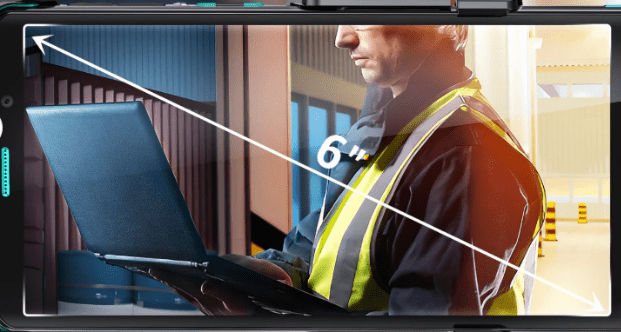The days of looking for neighborhood mobile stores when you first arrive in a European country are over. Today’s traveler appreciates the sophistication of integrated SIM technology, a digital solution that completely does away with physical cards. From the Mediterranean beaches to the Norwegian fjords, this ground-breaking strategy revolutionizes communication throughout the continent.
Without having to deal with small plastic cards or go to congested carrier stores, Europe eSIM technology allows your device to connect to European networks while keeping its home number. This smooth switch between networks occurs automatically for travelers visiting several European nations, frequently without them even realizing the digital handshake taking place on their device. Greetings from the connected travel future of Europe.
1. Pre-Departure Digital Preparation
Implementing eSIM successfully starts long before your flight to Europe takes off. Check the settings for “eSIM” or “Cellular Plans” choices, which are usually located under network or cellular menus, to confirm that your device is compatible. To give yourself time to take care of any activation problems from the comfort of your home, buy your preferred European eSIM plan at least 24 to 48 hours before your trip. For redundancy, download and store your eSIM QR code to your cloud storage and photo gallery. Take a screenshot of the provider’s installation guidelines and support contact details, as these may not be available if activation issues occur overseas. Lastly, complete the installation instructions without deactivating your conventional SIM to test your eSIM while it is still linked to your home Wi-Fi.
2. Airport Activation Strategies
One of the most important parts of your eSIM trip throughout Europe is the airport transfer. Download any necessary travel apps that require verification codes while you are still on your home network before boarding, since these messages may reach your home phone while the activation limbo is in effect. When you first arrive in Europe, be patient while the network connects; most devices need two to three minutes to find suitable carriers. To finish the installation procedure without cellular disruptions, use the free airport Wi-Fi instead of instantly turning on your eSIM in the packed arrivals hall. Make sure your smartphone has enough battery life for the potentially power-intensive activation procedure and subsequent network optimization by setting aside about 15 minutes in a comfortable area with dependable Wi-Fi.
3. Managing Dual Connectivity Effectively
The key to using eSIMs successfully throughout Europe is mastering dual connectivity. The majority of smartphones function in Dual SIM Dual Standby (DSDS) mode, which keeps your home number and European eSIM active at the same time. Set up your device to use your home number for calls and texts (keeping it accessible for emergency contacts and banking verifications) and to use your European eSIM for all data usage. This division preserves necessary communications while avoiding unintentional roaming fees. While iPhone users access these features under Settings > Cellular, Android users should go to Settings > Connections > SIM Manager. Make unique labels for every profile (such as “Home” and “Europe Data”) to prevent misunderstanding when you’re changing settings while traveling. Even though both numbers are still available, keep in mind that only one data connection is active at once.
4. Cross-Border Transitions Without Physical Swapping
Crossing the European border used to require juggling SIM cards, but eSIM technology has made digital transitions simple. Without user input, regional European eSIM plans automatically identify new nations and establish connections with partner networks. In areas with frequent border crossings, such as the Benelux countries or the Alpine regions, where traditional physical SIMs would need to be switched out frequently, this seamless connectivity really shines. The changeover usually takes 30 to 60 seconds, during which your device shows a brief “Searching” status followed by the network name of the new nation. When right at border crossings, turn on airplane mode for 10 seconds to get the best performance. This will allow your device to do a clean network scan instead of trying to keep up the signal from the previous country, which gets farther away.
5. Troubleshooting Connection Issues Abroad
In European environments, connectivity issues might occasionally arise even with well-thought-out eSIM solutions. Start with the easiest fix for connection issues: turn on airplane mode for 30 seconds, then turn it off to force a new network scan. If issues continue, make sure your APN settings correspond to the guidelines provided by your provider, which are usually included in the email you received at initial setup. Instead of depending on automatic detection, use the carrier selection menu on your device to manually choose options in places where there are several possible networks. Switching between 5G, 4G, and 3G network options typically helps with signal issues in rural areas because lower technologies often provide wider coverage despite slower speeds. Keep in mind that, regardless of provider or technology, structures with strong stone walls, which are typical of medieval European locations, inherently block cellular signals.
6. Managing Data Consumption During Extended Travel
The functionality of your European eSIM is extended over longer trips with careful data management. Start by setting up consumption alarms at 50% and 80% of your allotment, resetting statistics upon activation, and activating the built-in data tracking features on your device. During daily explorations, use hotel Wi-Fi to download necessary maps, language databases, and trip guides so they can be used offline. Modify the application’s settings to stop background data usage; this is especially crucial for social media sites, streaming apps, and photo backup services that would otherwise discreetly use up your allotment. Budgeting appropriately avoids mid-journey data weariness. Standard definition streaming requires about 1GB per hour, while video conversations use about 4–8MB per minute. To create sustainable usage habits during your European excursion, think about setting up a daily data budget by dividing your overall allocation by the length of your trip.
Conclusion
Travel connectivity in Europe has been completely revolutionized by the eSIM revolution, which has improved cross-border transitions and removed physical card difficulties. With the right planning and management strategies, travelers may embrace this digital approach and take unprecedented control of their communication experience across the continent. More international integration is on the horizon as eSIM technology develops, which will make the digital voyage across European borders increasingly easier. Let eSIM technology provide the flawless connectivity you deserve for your upcoming trip across Europe.










